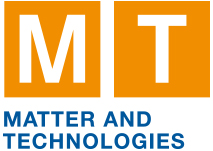Speaker
Description
When cooling down an ideal superconductor in an ambient magnetic field, the whole field is expelled according to the Meissner effect. In real superconductors, however, the ambient field is partially trapped in the material due to pinning centers like grain boundaries or impurities. This is called trapped magnetic flux. When applying electromagnetic radio-frequency (RF) fields, these trapped flux lines cause power dissipation in the material. This is particularly an issue in superconducting cavities for particle accelerators, as it reduces the energy efficiency and thus increases the demands on the cooling infrastructure. Therefore, understanding the dynamics of trapped magnetic flux and the underyling mechanism is of high interest. The influence of the material and cooldown conditions on trapped flux could provide valuable information for the optimization of material treatments and an efficient operation of superconducting cavities. For this purpose, a new test-stand named CRAFT (CRyo-cooler based Analysis of Flux Trapping) has been developed, being a successor of the liquid helium-based test-stand TraMaFluX. With the use of cryo-coolers it allows a considerably faster and more cost-efficient systematic characterization of trapped flux dynamics in rectangular superconducting samples. CRAFT enables an automation of the entire measurement procedure, allowing over 400 superconducting transitions to be performed per day without manpower.
In the following the structure of CRAFT is discussed and the measurement procedure of trapped flux is explained. Exemplary measurement data is shown and compared with data gained by the previous test-stand for the validation and characterization of CRAFT. It will be seen that the new test-stand does not only reproduce the previous data, but also expands the accessible parameter space. First measurement results and the arising possibilities by the automation of CRAFT are demonstrated.
| Speed talk: | Normal speed talk selection |
|---|

